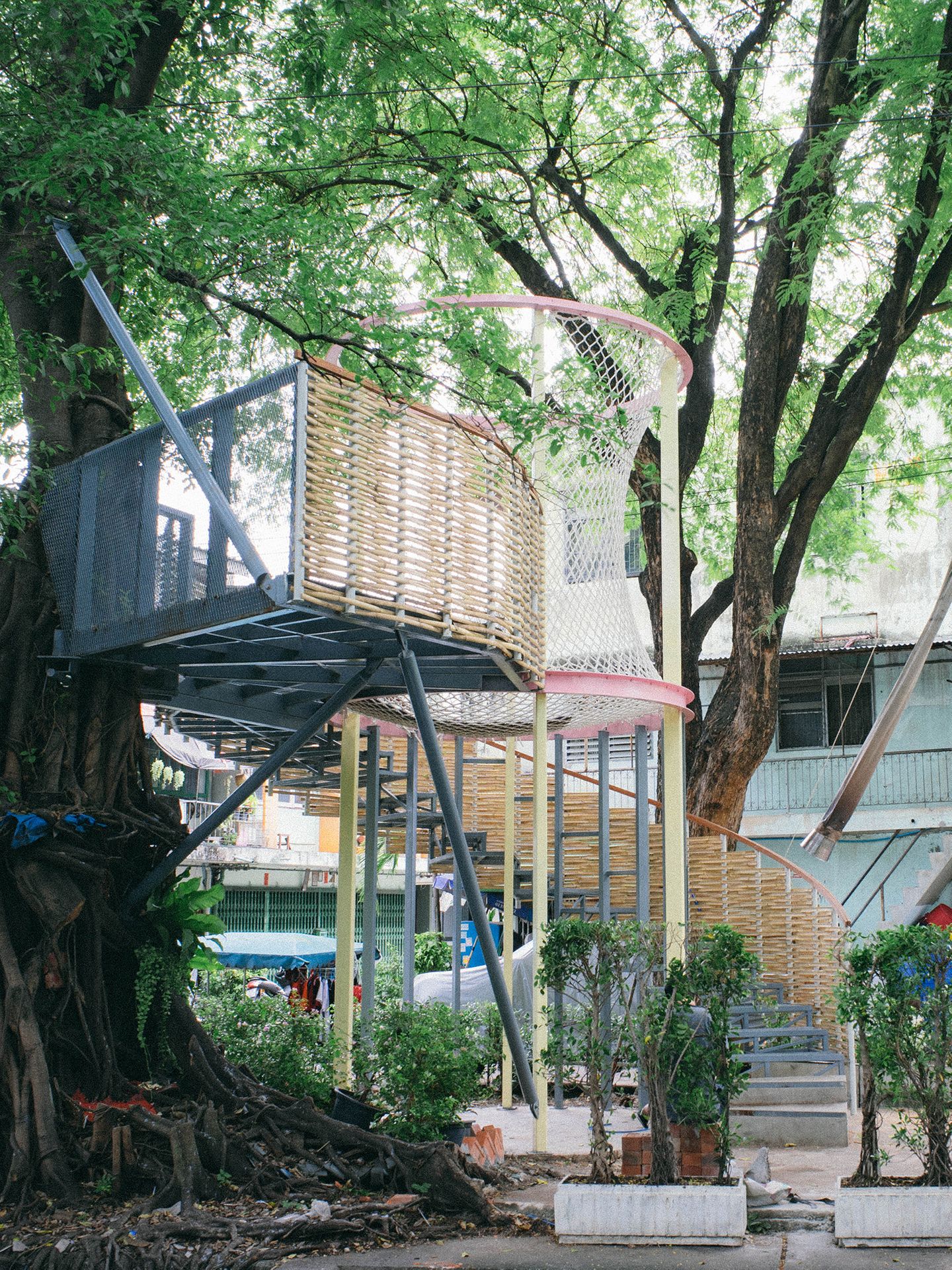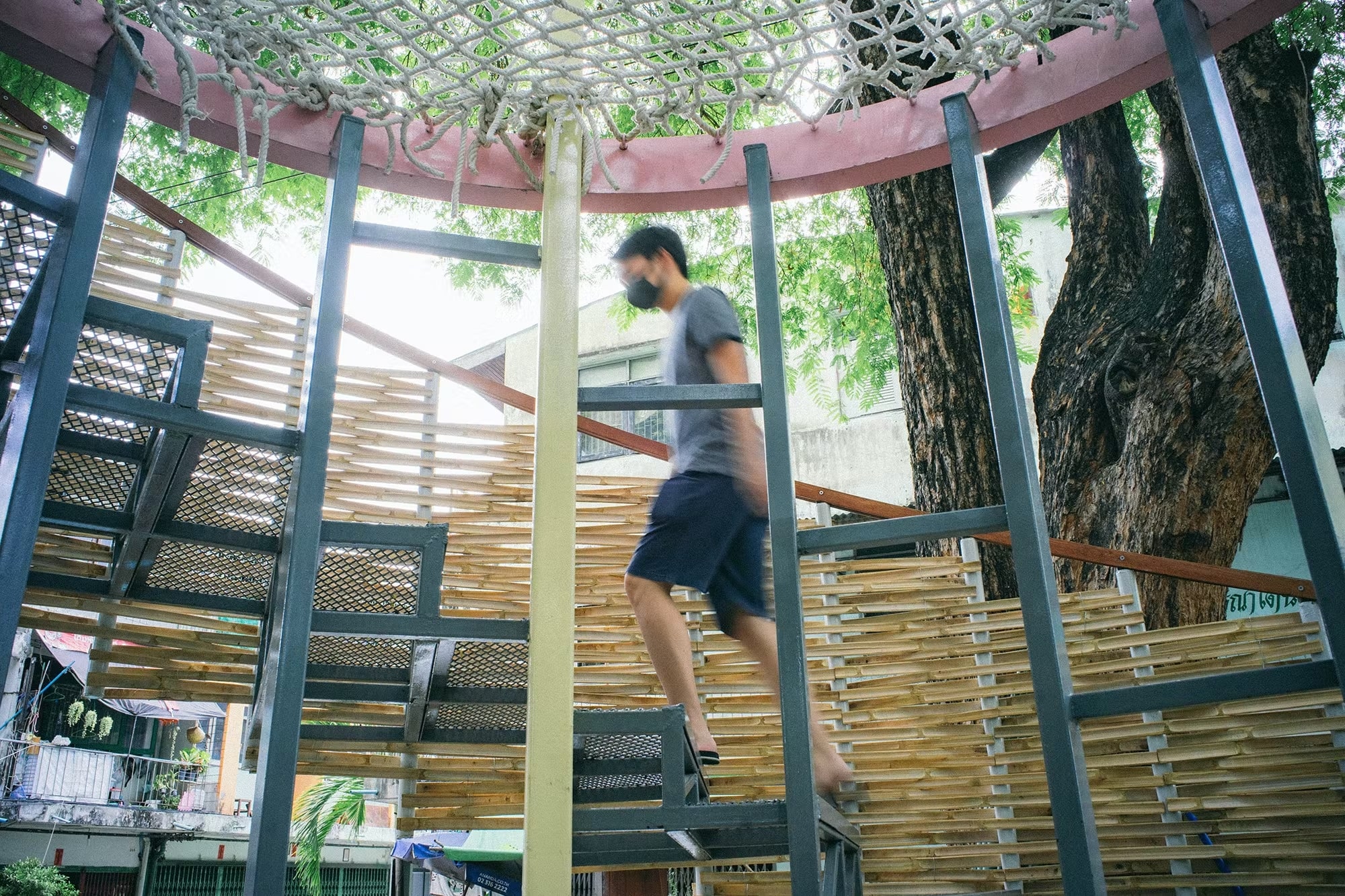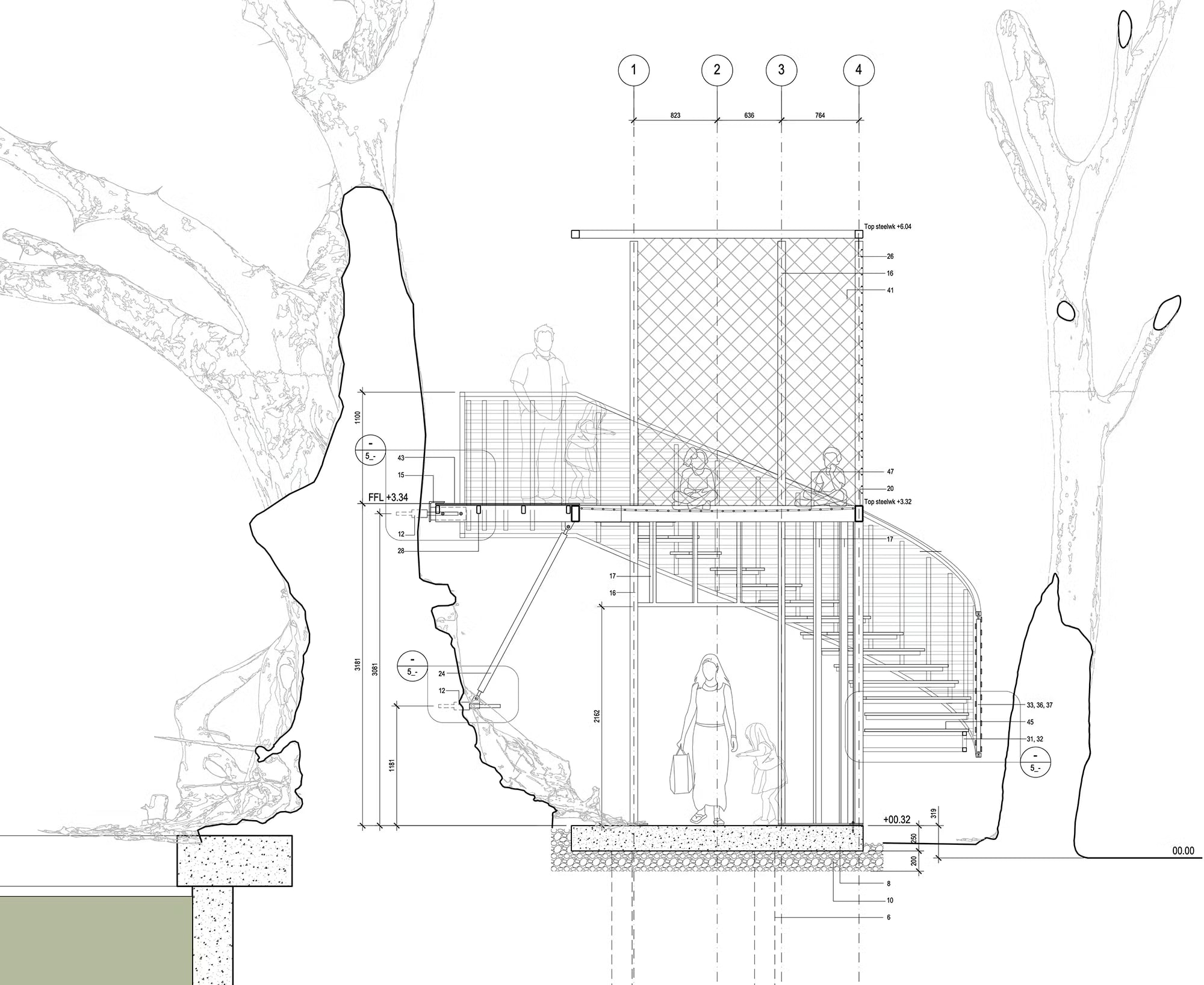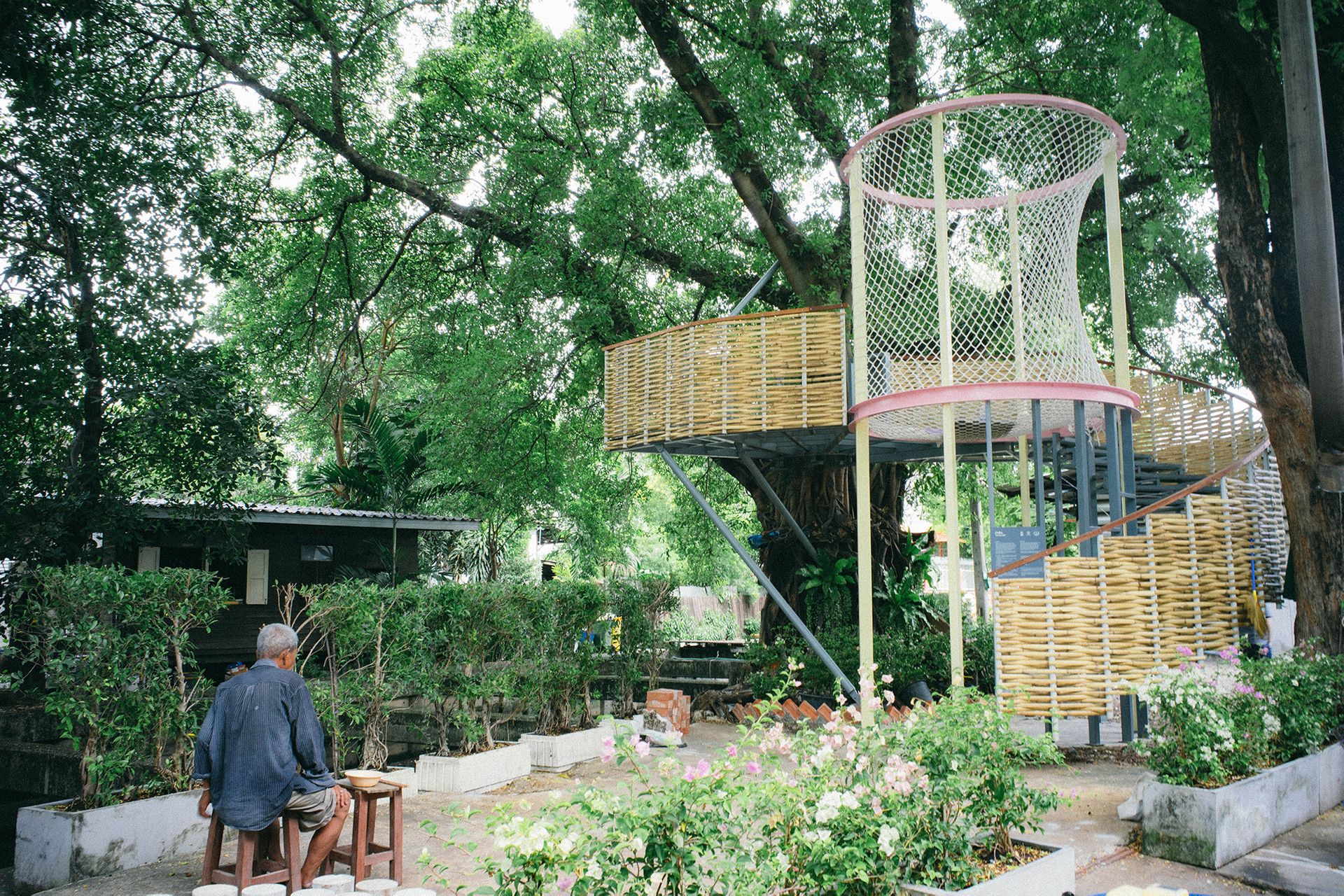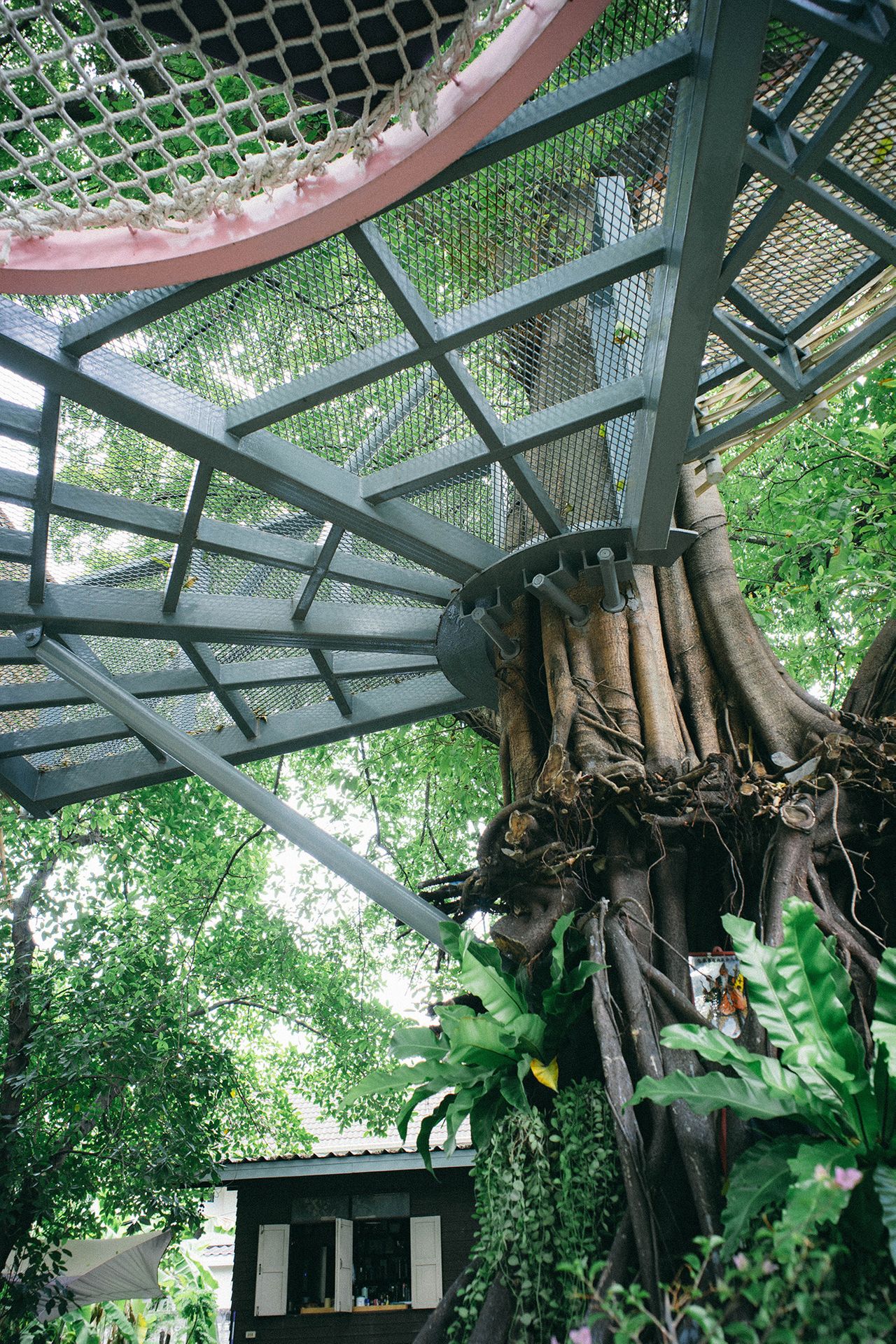Bangkok’s grand trees are an essential part of the urban landscape. They provide shelter and shade; they act as gathering points for food sellers and tuk tuk drivers; they give the streets their distinctive character; they absorb airborne pollutants, and they sequester carbon. Trees provide habitats for birds, squirrels, and insects, and they have bridged human generations, embedding experiences and rooting communities. ‘Treescape’ embraces our inescapable connection with Bangkok’s trees through the construction of an elevated structure that brings together the local community in Phra Khanong. Students met with arboriculturalist Rainer Reichel to better understand the features and characteristics of the local trees, created a highly precise 3D photogrammetric scan of the trees, and presented their design proposal to the Phra Khanong District Authority for approval. A reinterpretation of a childhood tree house–an enchanting stage elevated above the site–the structure provides safe access to higher branches in the tree’s canopy and creates a unique space for play and for environmental connection.
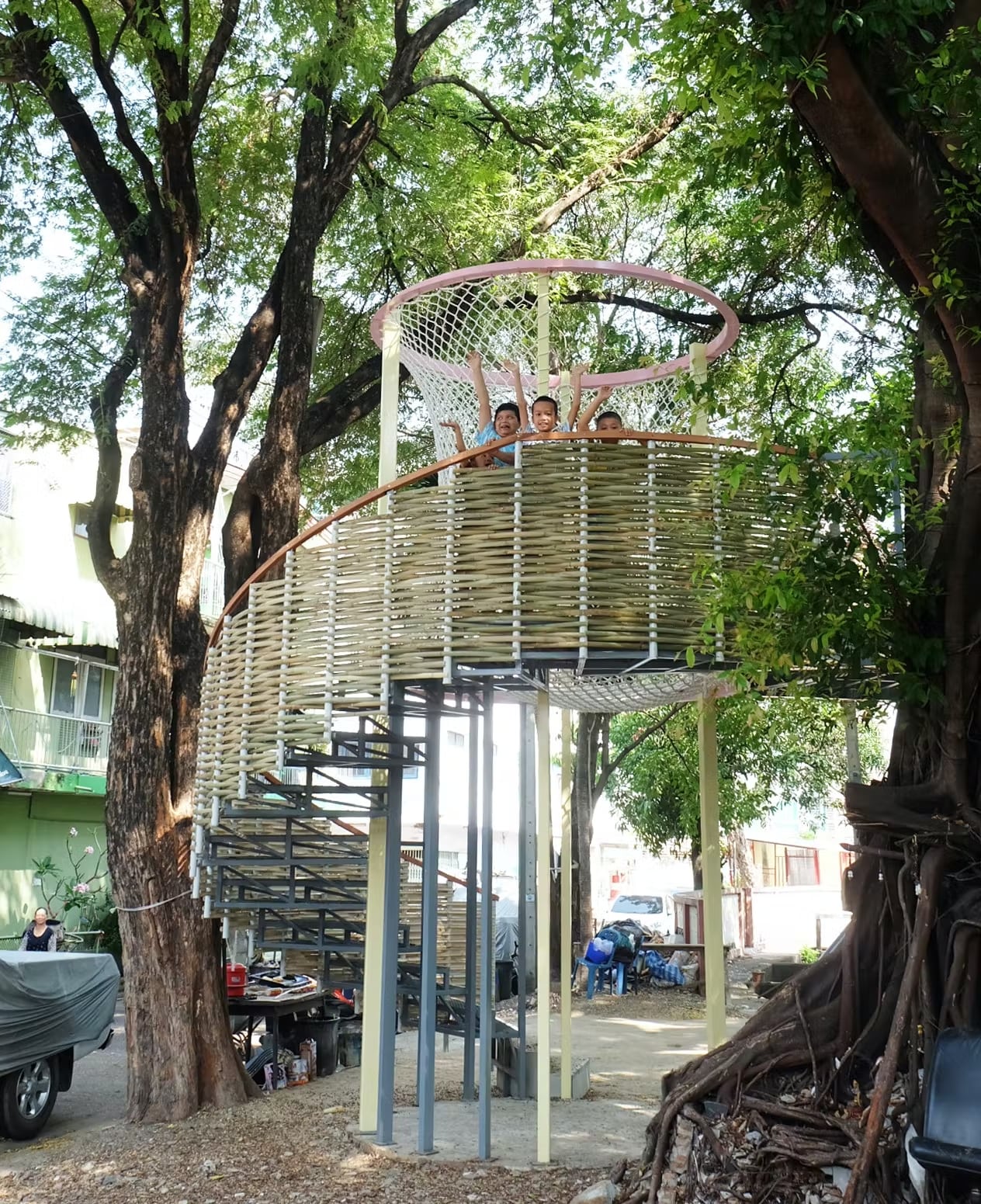
Will Hulbert
Thomas Lozada
Rainer Reichel, arboriculturalist
Meinhardt, structural engineer
Thailand Urban Tree Network
Notice: Undefined index: collaborators in /var/www/vhosts/www.inda.arch.chula.ac.th/httpdocs/experimental-projects/wp-content/themes/tailwindtheme/theme/single-project.php on line 111
Tanapat Adulteerakit
Rachapon Jidapasirikul
Phurichya Jirayutat
Kanchaporn Kieatkhajornrit
Tinn Kiewkarnkha
Chidapa Kongsuphol
Thatsama Leeumnadwong
Natnicha Opasserepadung
Koonanan Panyahom
Paweenda Patarathamaporn
Kasipang Phantajak
Thanakorn Phonthanakornkul
Chanakarn Pongteekayu
Lalitsiree Ponsombatnun
Natnicha Pornteparak
Phapot Putthammarong
Pann Sermchaiwong
Napas Simarangsun
Lalipat Sirirat
Varinda Suphantharida
Suchat Telavanich
Arnon Vongarnon
Tanadon Wanitnunttada
Related Projects:
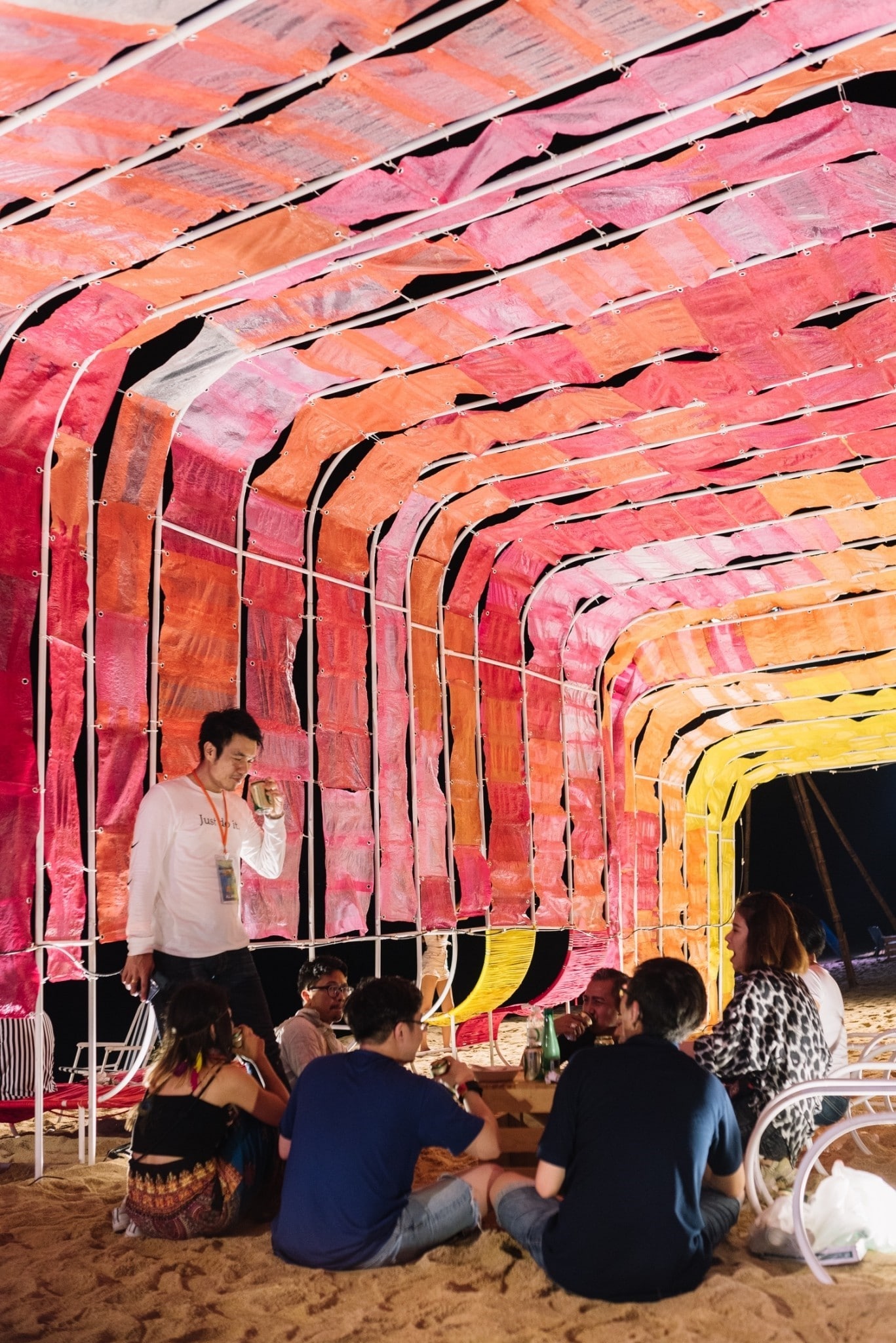
Spectrum
Bangkok Design Week 2018, an annual event organized by the Thailand Creative and Design Center (TCDC) invited the Thai creative community to share fresh and insightful visions of Bangkok with experimental design projects. “Spectrum” is a design-build workshop that proposes an alternative application for plastic bags and examines the architectural properties of the material including color, light transmission, elasticity, and durability. Exploring the concept of “upcycled” materials, students have collected over 500 colored plastic bags, flattened them, and fused them together to generate a cladding surface that includes specially-fabricated segments with a double curvature. The continuously-morphing pavilion structure consists of twenty-six powder-coated steel tube frames that provide different seating configurations, while its modular components and simple construction joints allow for easy assembly and disassembly to facilitate flexible reuse for future events. In fact, it was originally built at the Bangkok Art and Culture Centre (BACC) but was later reconstructed as part of MUI Fest 2018 on the island of Koh Samui.
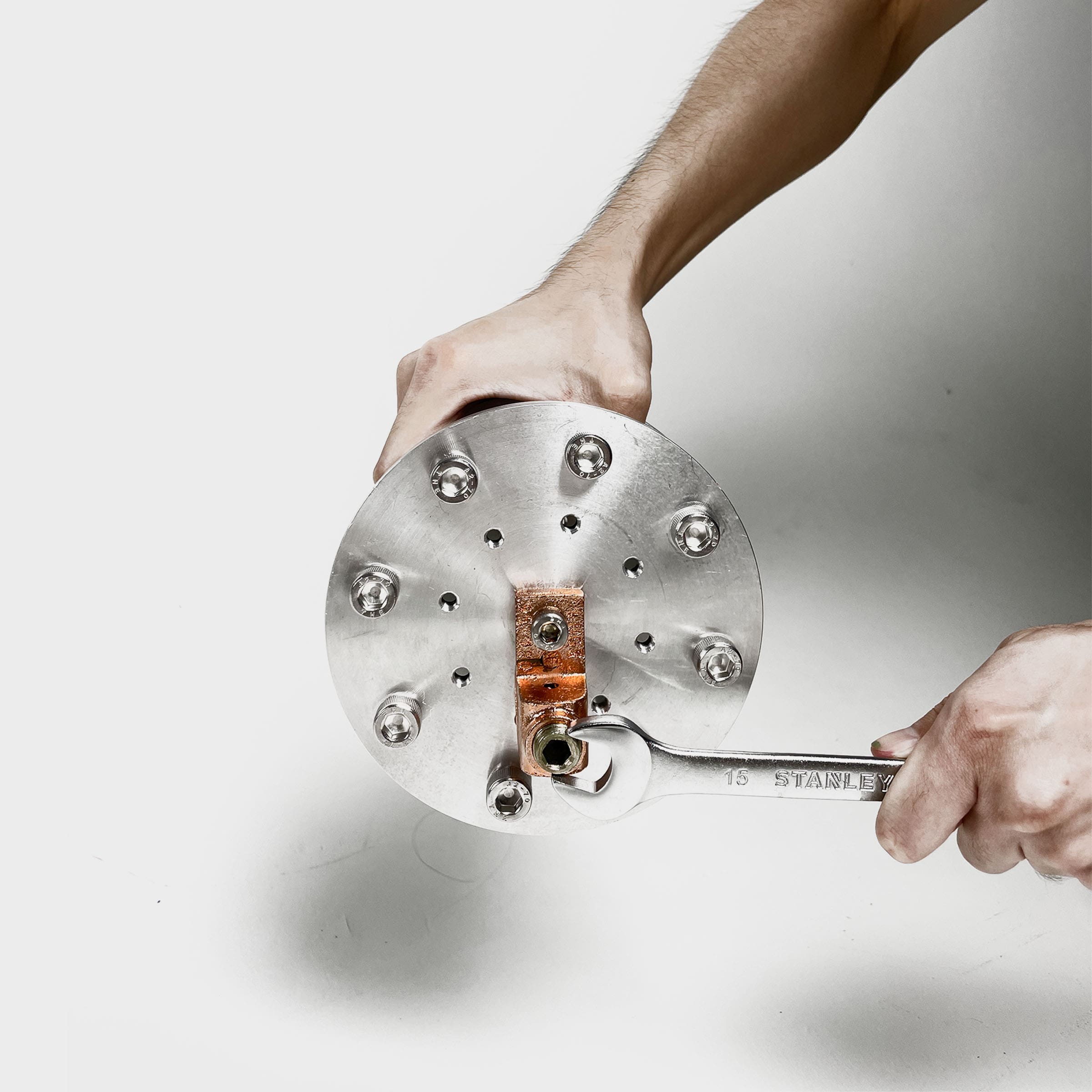
Deep Surface
The aim for this project is to interrogate the interrelationships between machine tools, machine instruction, material behavior, and geometry. More specifically, we will be developing robotic fabrication tools and techniques that target robotic toolpathing, contouring, and deep surfaces. Digital geometry is transferred into a designed toolpath that a robot arm or CNC machine follows in space. Each toolpath may consist of a series of planar ‘drawings’ that are successively ‘inscribed’ in a material (subtractive manufacturing) or successively deposited as material (additive manufacturing). Each stroke of the tool may leave a trace in the material locally; whether it is the depositing of clay, the carving indentation from a drill bit or the pressure of a brush. This means that we are as interested in the design of the toolpath as we are in the design of the overall form. The toolpath is where geometry interfaces with material. It is where geometry acquires character and articulation in the form of pattern and texture. It is where the precision of the digital realm may loosen as a result of a negotiation between geometry, machine, and material.
